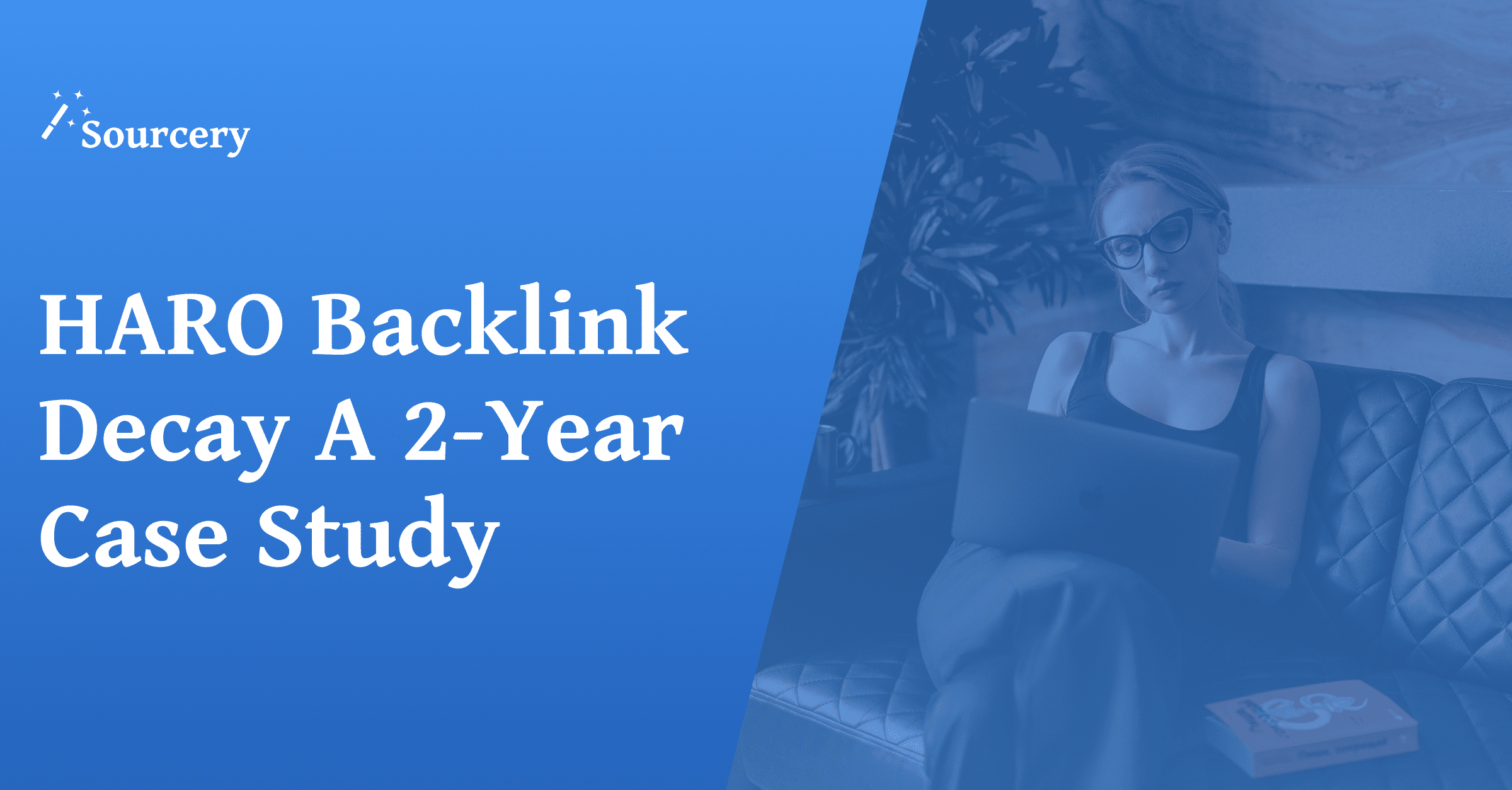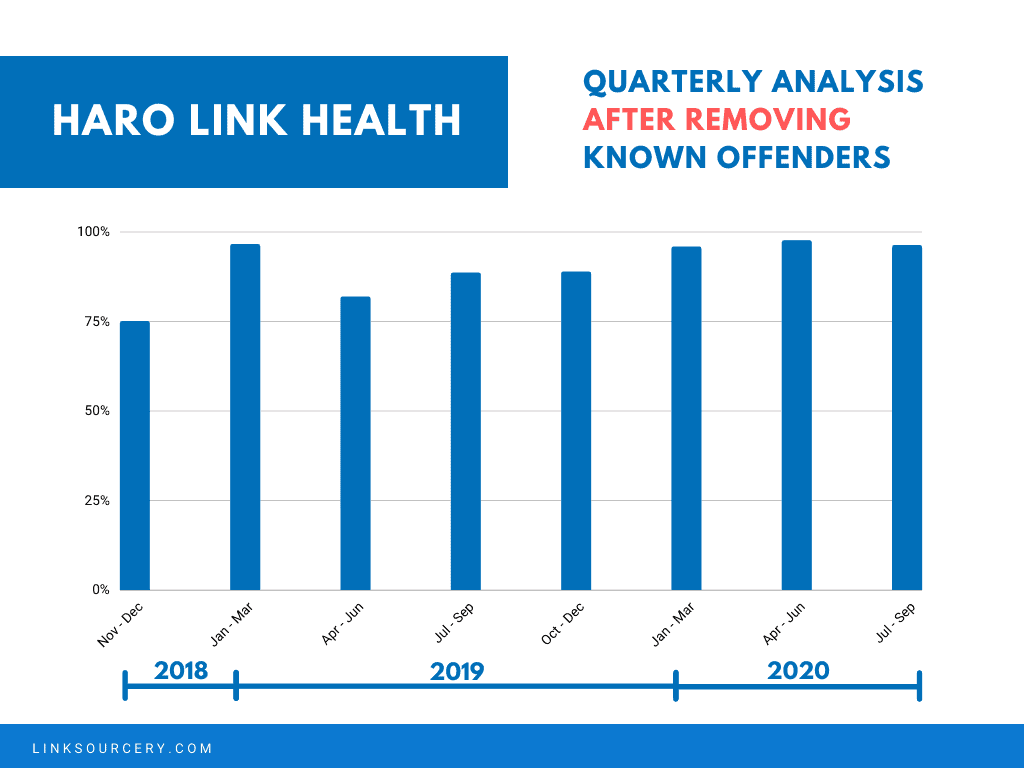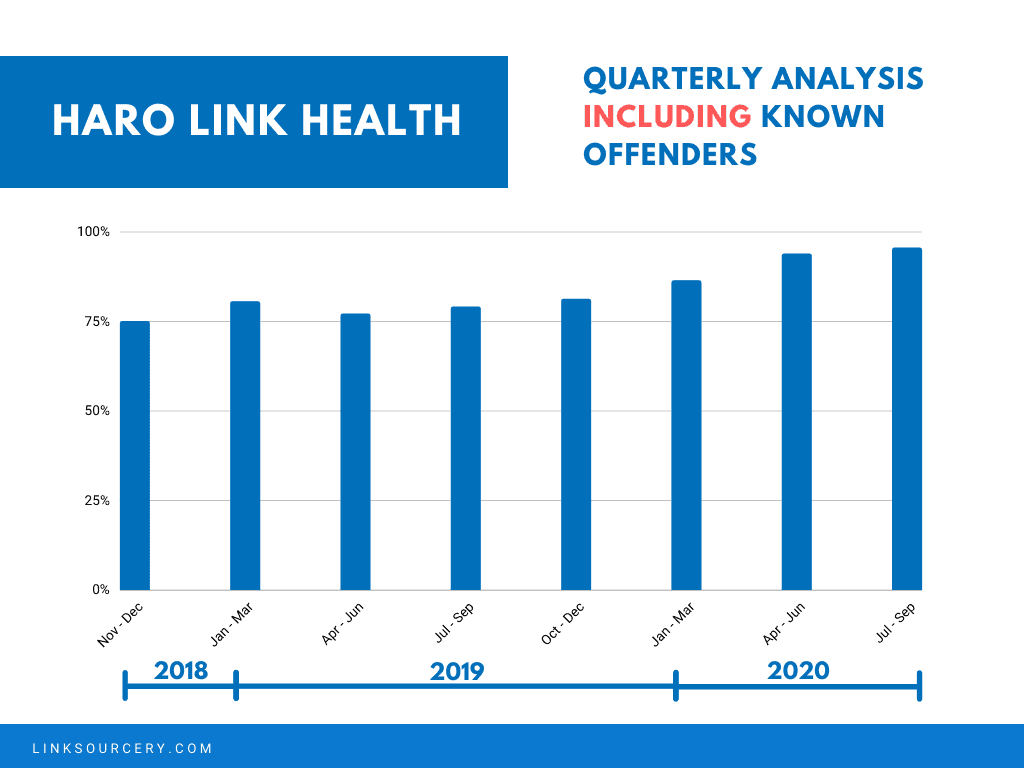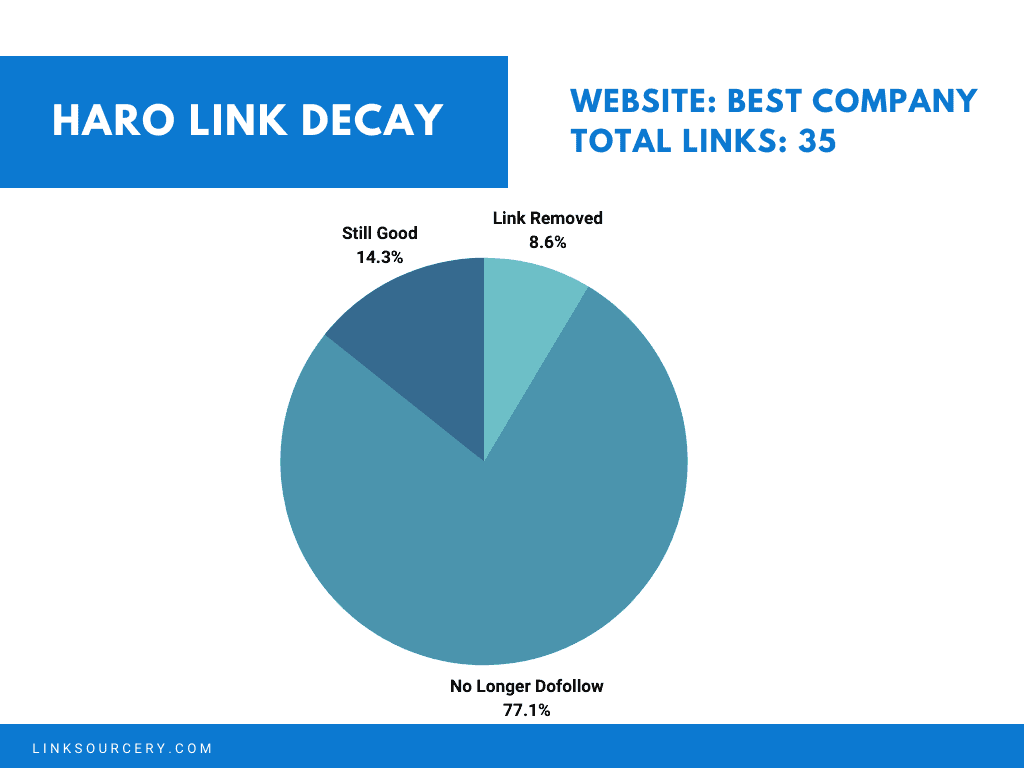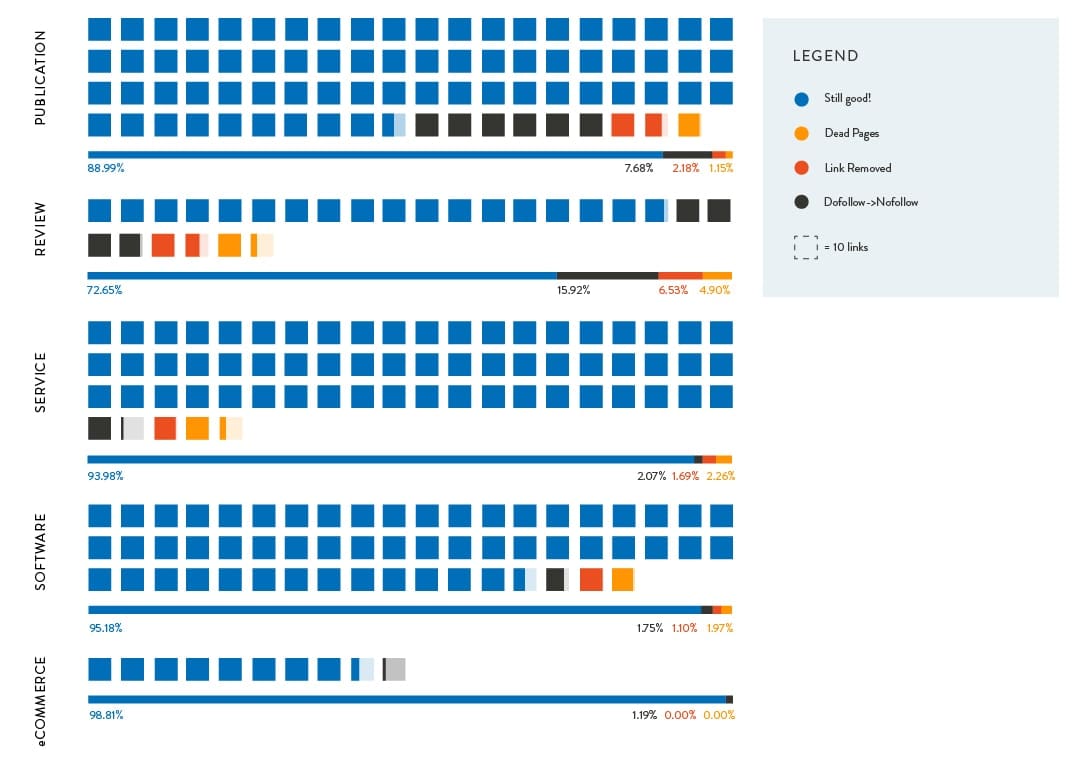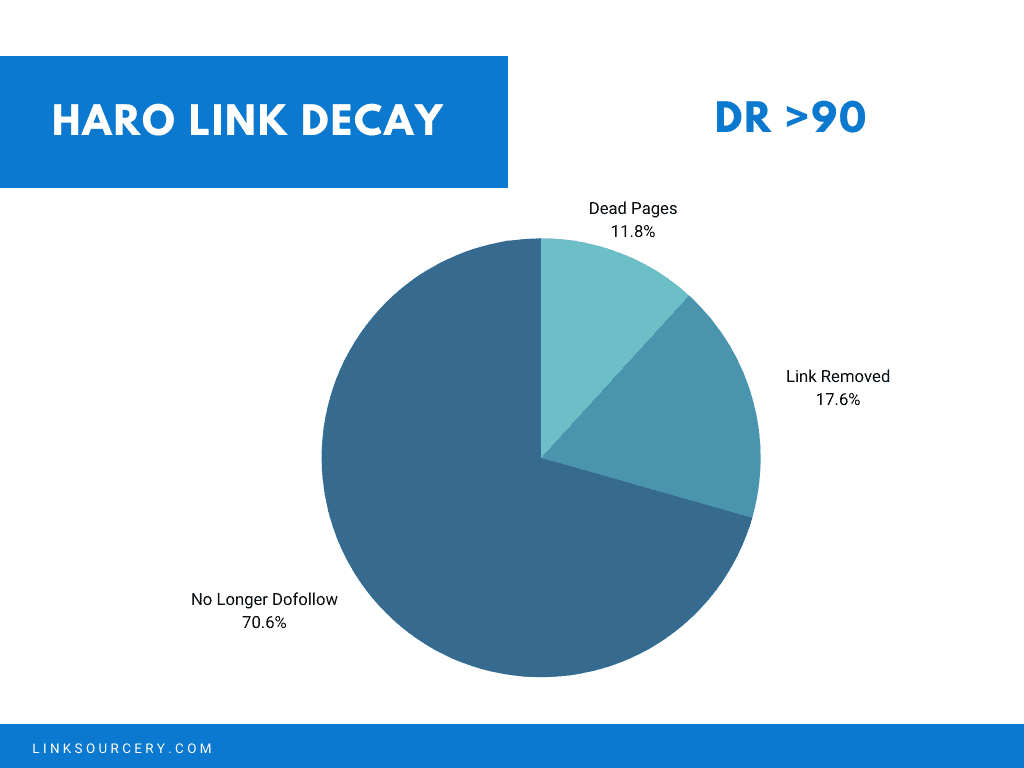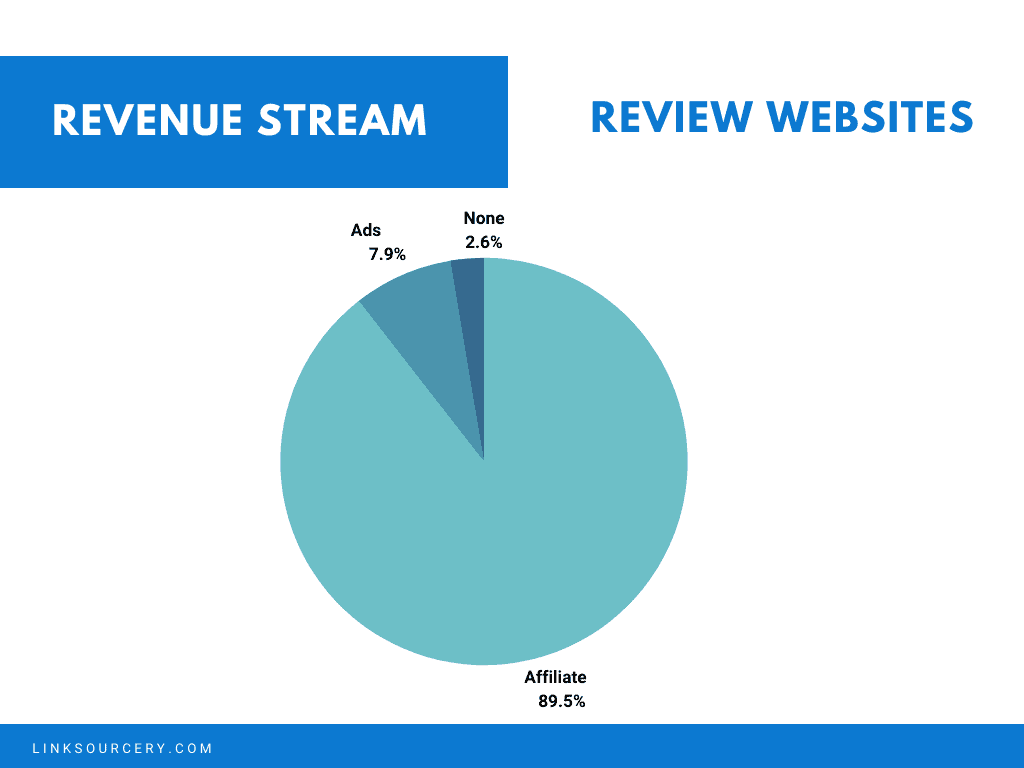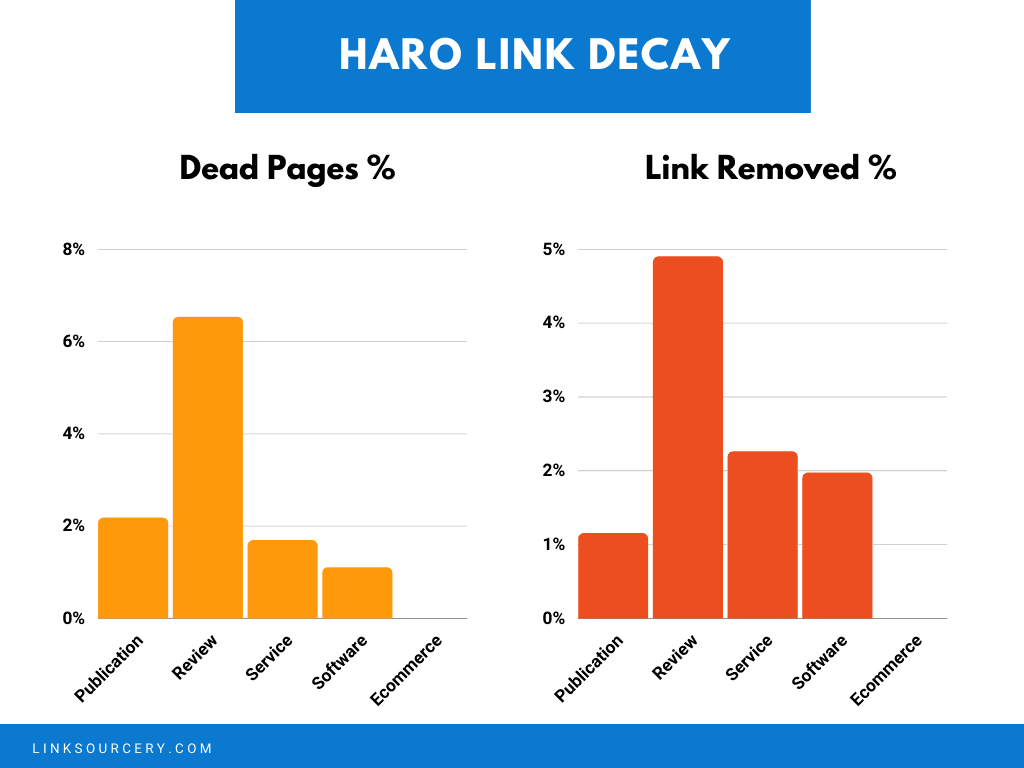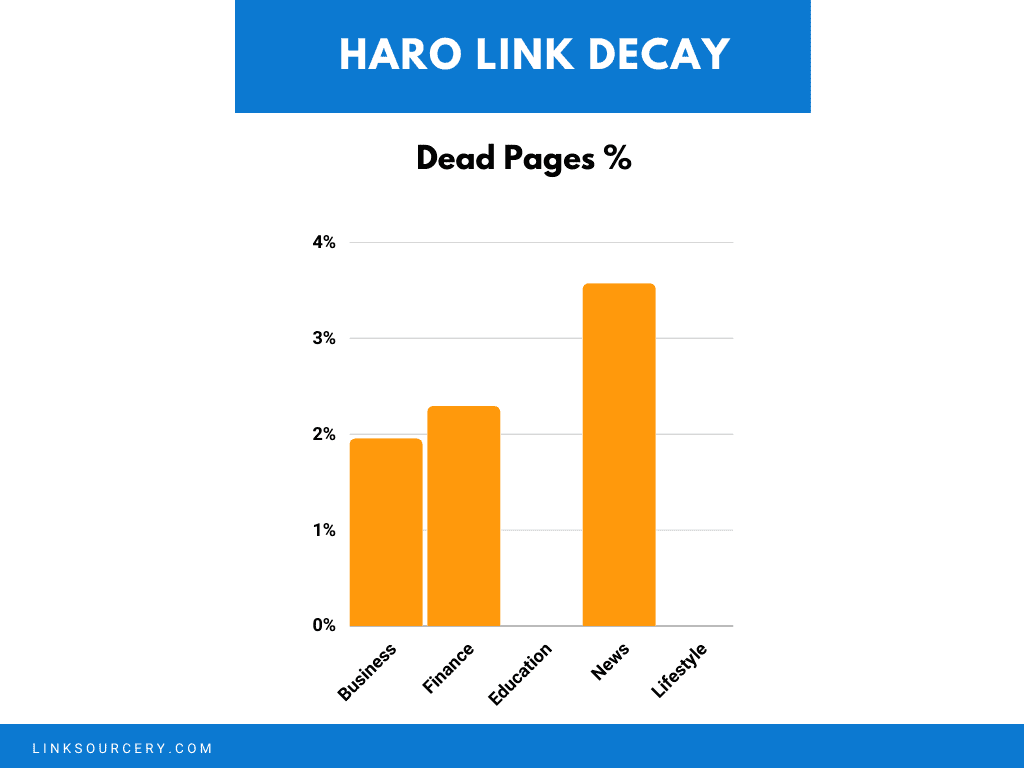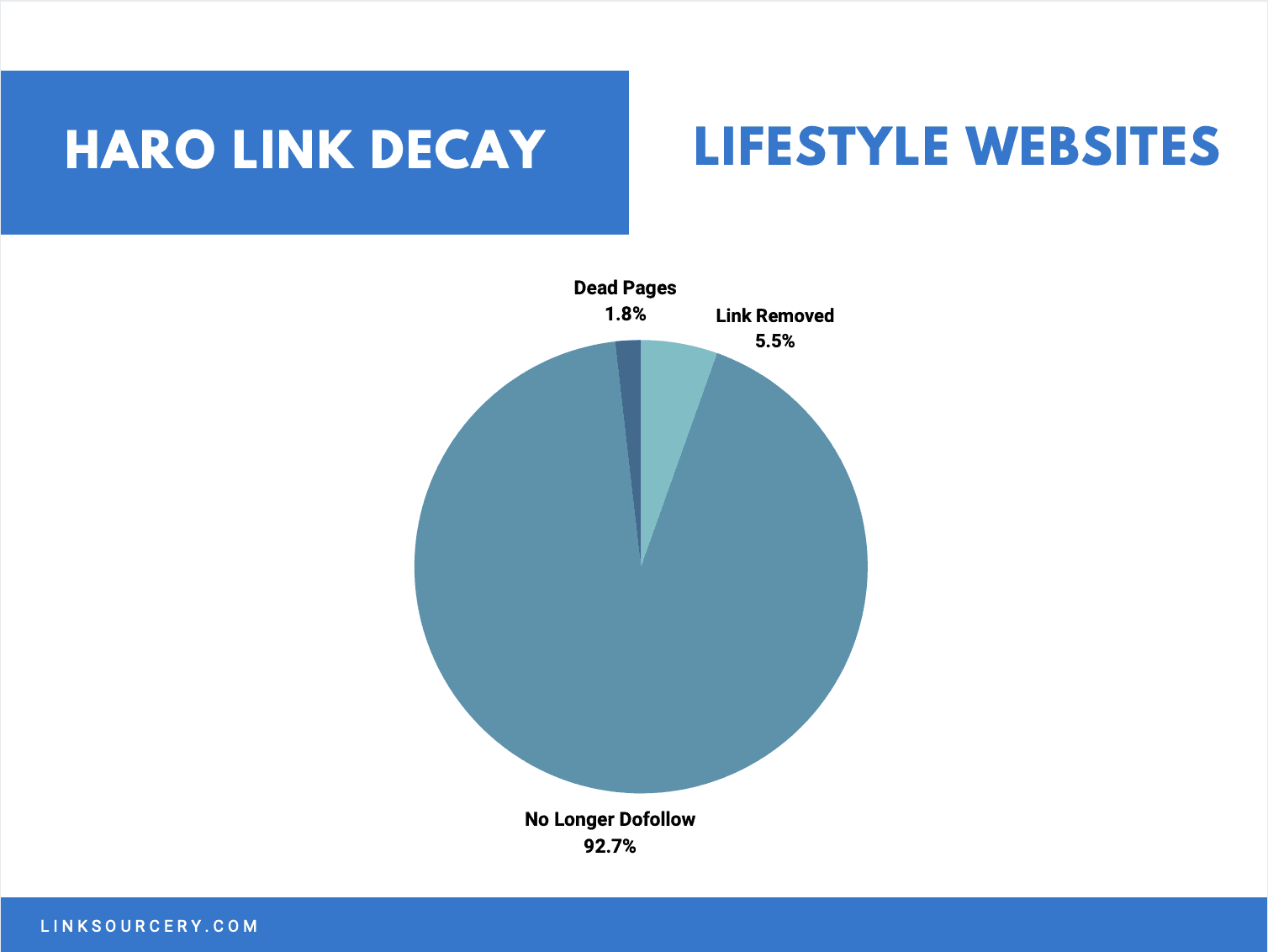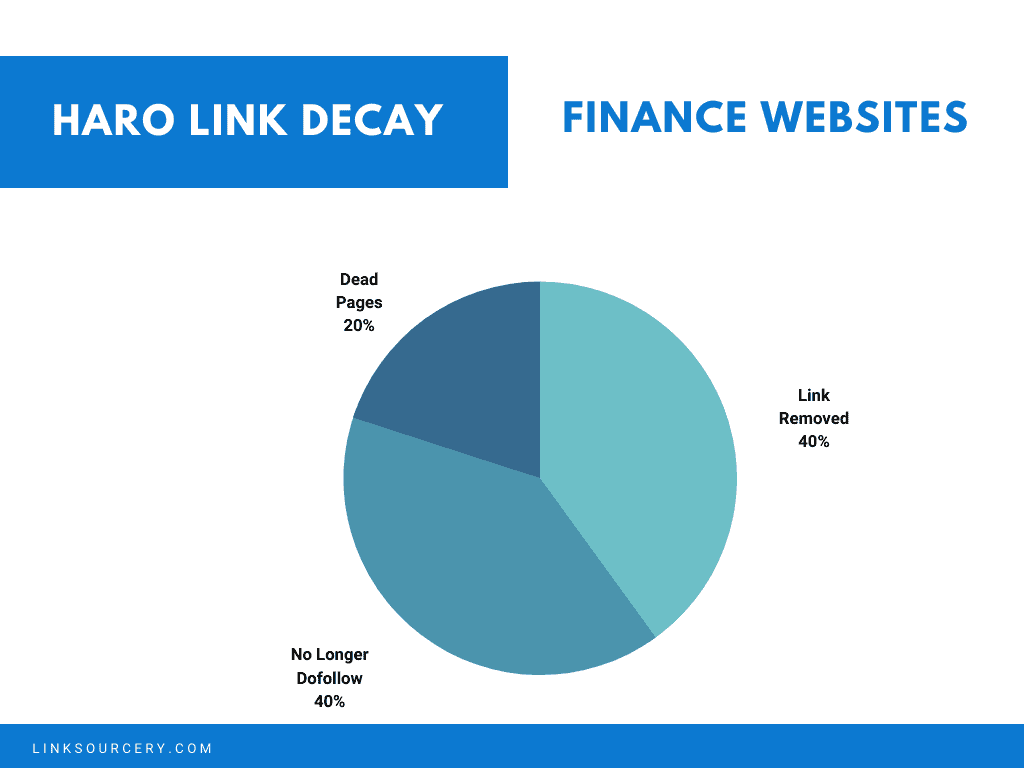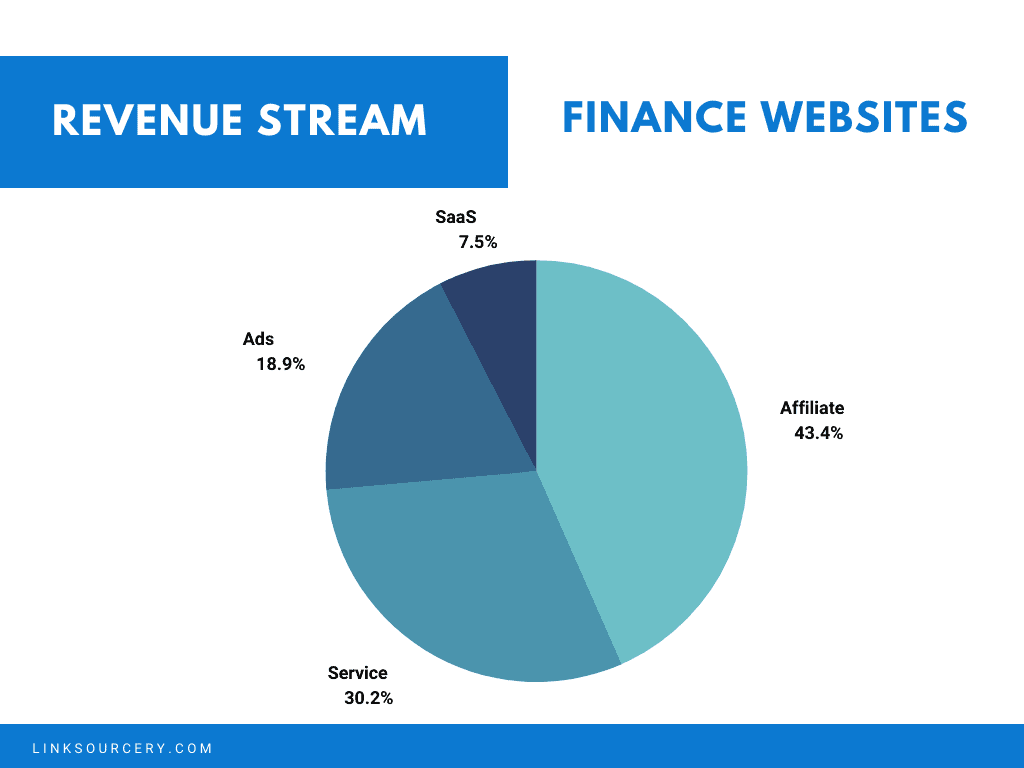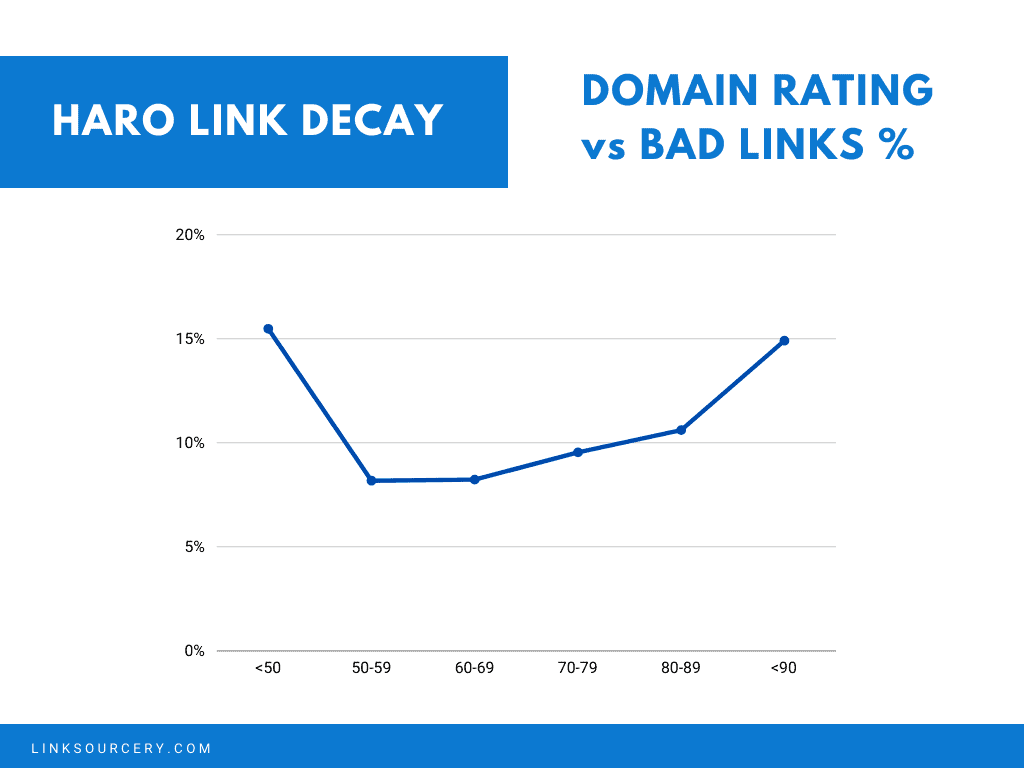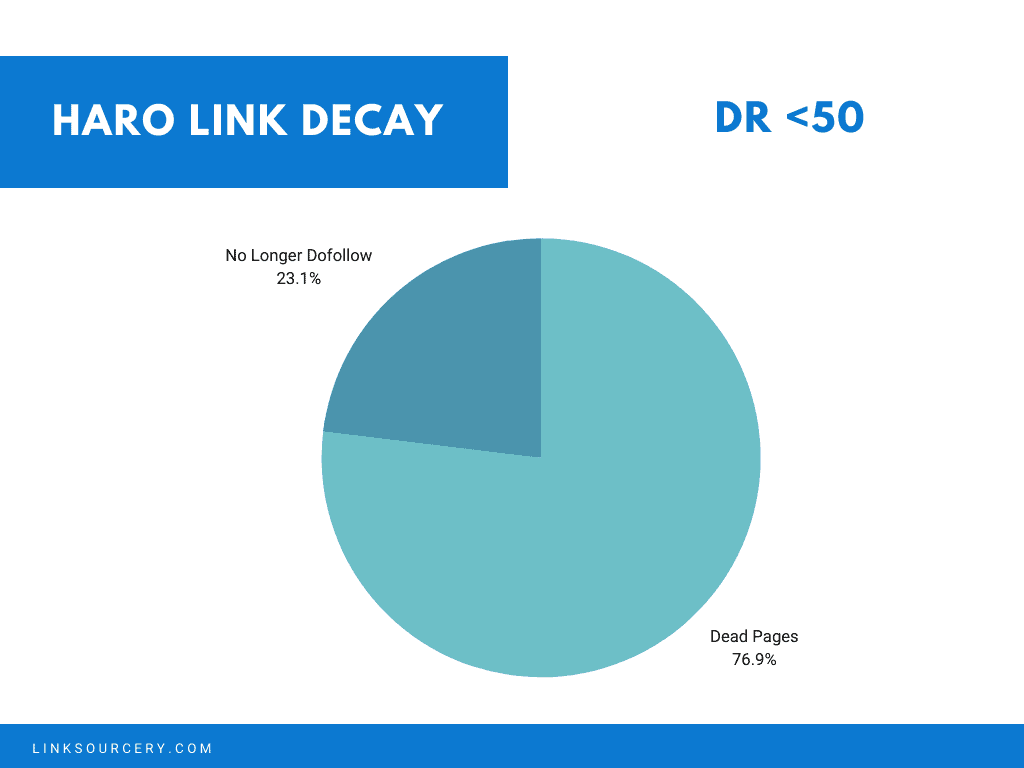HARO Backlink Decay: A 2-Year Case Study
Once you get the high of acquiring backlinks from HARO, you start thinking: “Isn’t this too good to be true?”
Some of our early-stage clients at Jolly SEO also asked this very question in different ways:
- You can actually get backlinks from publications like Business Insider to our homepage?
- And PR-worthy mentions in Wall Street Journal & other national publications?
If you’ve never heard of this bleeding-edge backlink building technique, we’ve elaborated the entire process in another blog post on what we’ve learned from sending 31,328 HARO pitches.
After acquiring 2,100+ links for our clients, we knew it was 100% real. Our next questions were:
- How do these backlinks age over time?
- Do large publications delete their old posts?
- Do webmasters secretly switch Dofollow links to Nofollow?
The last question is of special interest to serious link builders. Jolly SEO’s clients were primarily interested in dofollow links. So, it became critical for us to identify and weed out publications that apply a rel=“nofollow” tag to links.
What started as a process to weed out bad publications ended up giving us several more insights we’ll share below. Yes, some of the backlinks went stale, but there’s a lot more to the story.
To sum it up, we analyzed all 2,102 links which Jolly built in the previous 24 months. What we found out is going to save us hundreds of thousands of dollars in the future. If you read on, it might save you money and effort as well.
Our data compilation process
To compile this data, the Sourcery team manually opened up every single one of the 2,102 pages with backlinks to see if they were still dofollow. While most of them remained solid, others offered an unwelcome surprise.
Labeling links and categorizing websites
Our analysis was performed at the link, website, and business model levels.
Links were assigned one of four labels, based on their December 2020 status:
- Still Good: These rock-solid links are all DR 50+ and dofollow (Jolly SEO’s billing eligibility requirements as of December 2020)
- Dead Page: These now return a 404/403
- Unlinked: Client’s quote and website still mentioned, but the backlink was removed
- Nofollow: The tag rel=“nofollow” was added to the hyperlink
We categorized each domain by industry, business model, and core revenue stream. This wasn’t done using any third-party tool; we manually analyzed each and every website.
Finally, we used Feedly to research each website’s publishing frequency, and Ahrefs to re-define the domain rating of each website.
Domain rating or DR: Ahrefs metric that denotes the strength of a website’s backlink profile in terms of quantity and quality.
DR is measured on a logarithmic scale. This means that it’s harder for websites to jump from 70 to 90 than 50 to 70. This is why backlinks from high DR websites pass on exponentially more SEO “link juice” than the lower ones.
“Link juice”: an informal term used by the SEO community to describe signals passed from one site to another through hyperlinks, boosting the receiving website’s rank in Google Search Engine Results Pages (SERPs).
How HARO backlinks decay over time
During the course of our analysis, we identified five major “offenders” – websites that contributed the most to our backlink decay.
Below, we offer an analysis of link health (or decay), arranged by quarter.
First, we have a side by side analysis. The first bar graph incorporates all 2,102 links, while the following graph displays the results after removing from the analysis all links from those five major offenders.
As you can see, the bar gets better each quarter. We managed to hit 90% 6 months ago and have managed to keep it that way. To be sure, a small percentage of the most recently built healthy links might decay in the future.
However, a more significant factor is at play here than even time: knowledge.
This correction took place because we intentionally stopped pitching serial offenders. If we had this wisdom in the beginning, the graph would’ve looked like this (5 top offenders removed):
The resulting “knowledge gap” is huge!
You can see how our knowledge began to build over time. By Q3 2019, we began closing that gap by actively tracking link decay and reducing our pitches to known offenders.
Once you get into the practice of identifying and not pitching websites that actively work to reduce the value of your efforts, your decay percentage drops to a minimum.
Serial Offenders affect 70-85% of your healthy links
One of the top serial offenders was BestCompany.com. By the time we had built 35 client backlinks from this website, we already labeled it an “easy win”.
But, we soon realized that even the best of companies (pun might be intended) can suddenly go on a Nofollow spree causing a sudden hemorrhage of backlinks.
Only 14.3% of the backlink wins from Best Company are still good as of December 2020. To give you some perspective, we spent north of 70 hours acquiring all these backlinks.
When we realized this, there was still a silver lining:
“This confirmed our suspicion that link decay is not a random anomaly.”
If we could find the publications who did this consistently, all we had to do was remove them from our pitching list.
We considered websites with more than 5 non-billable links as serial offenders. Four more websites joined the list:
Each of them only had around 15-30% backlinks that were still good.
On the whole, we’d spent 384 hours acquiring these 128 backlinks. A decent writer who charges $50/hour can make 4 HARO pitches in an hour, and place 1 link for every 12 pitches they make.
From an expenses perspective, if we’d had this intel beforehand, we would have saved $19,200 by excluding these websites from our pitching lists.
Or, for the revenue-minded:
The average value of a dofollow HARO backlink being $500, if we had had this intel before pitching, we would have directed our efforts elsewhere to generate an additional $64,000 worth of backlinks.
“Pitching to rogue publications is the #1 revenue killer for companies using HARO as a backlink source.”
Putting it all together, these 5 domains alone amounted to $83,200 worth of missed opportunities.
This light bulb moment made us realize we had to take our analysis further to identify patterns based on the business model, industry, and domain rating.
Business Model
Websites opt to remove links, add rel=”nofollow”, and conduct other SEO best practices because of their business model. At the end of the day, all content and SEO strategies should align with the business strategy.
Backlinks from eCommerce, software, and service websites give the most reliable backlinks.
98.81% of eCommerce backlinks are still rock-solid, even 24 months later. Websites selling software and services also topped the list, with an impressive 95.18% and 93.98% backlinks remaining healthy, respectively. These websites combine to form 51.09% of the total backlinks we acquired.
27.35% backlinks from review websites went bad over time
Review websites do detailed comparisons of different products and services. They help people make buying decisions.
Unfortunately, they have a terrible record of backlinks going bad. Only 72.65% backlinks would be billable now according to Jolly SEO’s journalist outreach service standards. The remaining 27.35% were either removed, tagged with rel=“nofollow”, or were part of pages that vanished altogether.
Further analysis revealed that review websites were capable of all three fouls, to varying degrees:
Of the 38 review websites we analyzed, 89.5% depend on affiliate revenue:
Affiliate websites compete like crazy for the top SERP spot. As such, they conduct frequent SEO experiments on their existing content. The link removals and changing links to nofollow could have been part of those experiments.
7.68% Backlinks from publications updated to rel=“nofollow”
Publications are websites that create revenue through their content. Like review websites, they don’t sell their own products or services. They give free information in the form of trends, news, and tips, and then monetize their traffic.
When it comes to deleting pages and removing links, publications are almost equally culpable when compared with services and software websites:
But, when it comes to nofollow links, publications are awful when compared with service and software. However, they are still nowhere near review websites:
7.68% of backlinks from publications were updated to nofollow, compared with 15.92% from review websites, 1.75% from software sites, and 1.19% eCommerce backlinks.
This could be because most publications churn out tons of content on a weekly basis:
We used Feedly to analyze these publications’ posting frequency. Out of 154 publications, 68.9% of publications publish more than 7 articles each week, with 32.5% publishing more than 50 weekly.
These are websites that hire tons of writers, and they have strict editorial policies. The nofollow trend may be part of their evolving editorial policy which staff is required to follow.
Industry Comparison
Business websites write about marketing, HR, leadership, and other related topics.
Backlinks from business websites remained 91.2% healthy over the 24-month period we evaluated. This confirmed our previous analysis that software and service websites provide the best ROI from pitching HARO, ProfNet, SourceBottle, and others.
News sites’ pages tend to disappear but are still worth pitching
News websites had the most dead pages, with 3.6% returning 404 or similar errors:
This could be because they delete old news that is no longer relevant, or update a story with a new URL slug.
Lifestyle and Finance websites are the least reliable
Lifestyle and finance websites maintained link health at 84.7% and 85.6%, respectively.
On lifestyle websites, rel=“nofollow” tags added post-publication were the culprit behind 92.7% of link decay:
Using Feedly to analyze 75 lifestyle websites, we found that 69.44% publish more than 3 articles each week, with 43.06% of them publishing more than 15 weekly.
One inference to derive from this data is that the weekly volume of newly-minted “older articles” leads lifestyle website editors to update external links to nofollow, either on a regular or one-off basis (our analysis didn’t dive into when the nofollow tag was applied).
Finance websites show a much more equal split amongst dead pages, nofollow, and link removal:
Analyzing the revenue stream of finance websites, most depend on affiliate revenue:
This could explain why link decay from these sites is so diverse; affiliate websites optimize frequently and experiment more readily than large corporate websites.
Backlinks from LOWEST and HIGHEST Domain Rating websites go bad more often
The correlation between DR and link decay shows that links are more likely to go bad at each end of the DR spectrum:
The graph shows a parabolic curve. Backlinks from websites with DR less than 50 and higher than 90 are more likely to decay.
Closer analysis revealed that the reasons for each category’s decay are equally far apart.
Out of all the bad links acquired from sub-DR 50 DR websites, 76.9% are now dead pages:
This could be because most of these websites are new, or are managed by non-professionals.
For websites above DR 90, nofollow links constituted 70.6% of link decay:
Webmasters of these sites seem to be extra careful. They quietly tag links as rel=“nofollow” later on to avoid linking to “lesser” websites. This could be a “best practice” writers follow at well-established websites to avoid any possible scrutiny from Google’s crawlers.
So what now?
This study has changed the way our link building agency sending 4,000+ HARO pitches per month approaches HARO. Still: there are so many insights uncovered; this is just the beginning.
We created Sourcery so that every business–no matter its scale–can have the tools to replace an agency with focused writers. While you’ll still need an expert writer, the years of knowledge built into Sourcery will save significant $$ & time.
Inside Sourcery, we’re even including our best HARO tips for both free & paying users. Sign up for Sourcery here to put all this knowledge to use.
Not ready to start pitching? Subscribe to our newsletter. We’ll keep publishing similar reports to improve your HARO pitching strategy.
Arvind Kesh
Arvind is a SaaS content enthusiast and was part of Animaker's core team when they scaled from 200k to 2.6 million. Crunching data is what excites him the most! When he's not writing or analyzing data, he explores the art of storytelling through the stage and camera.

